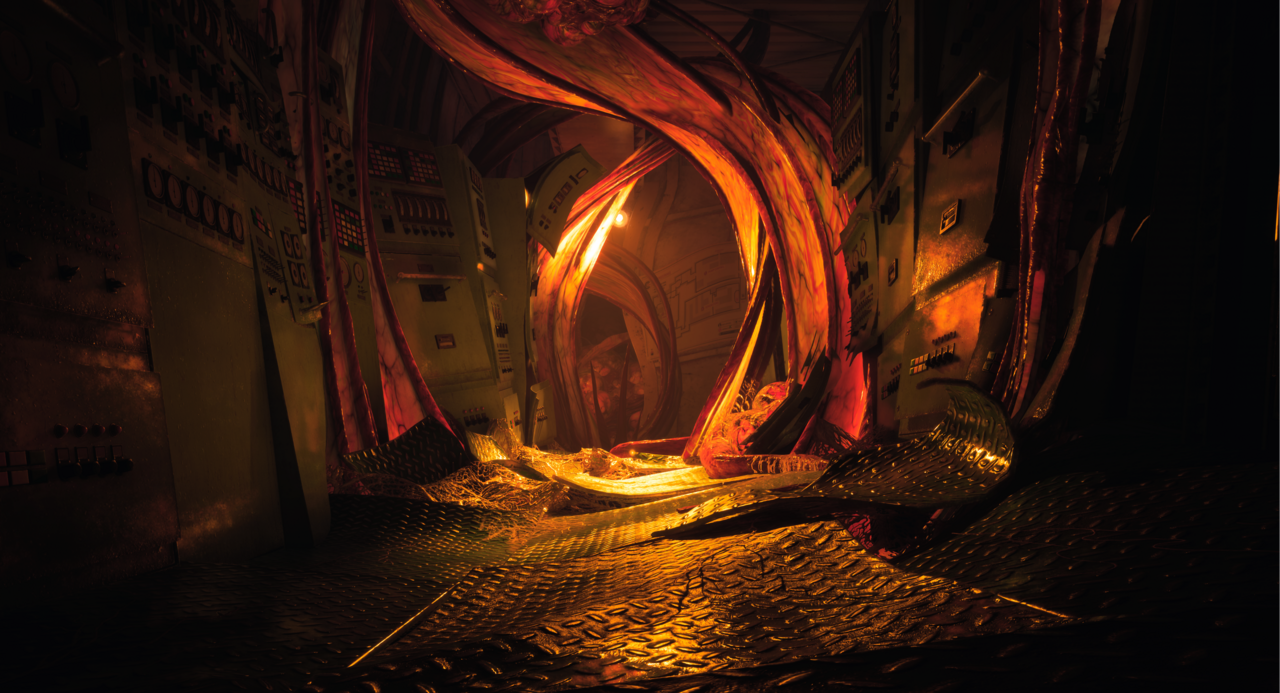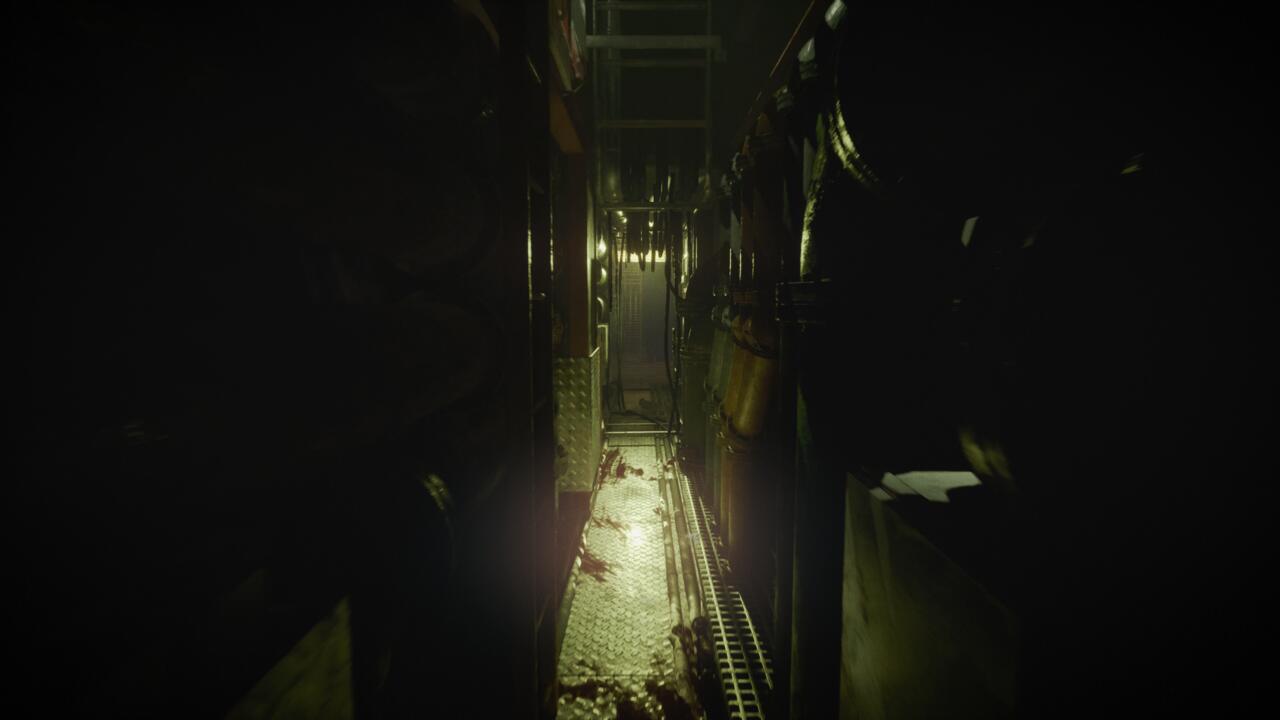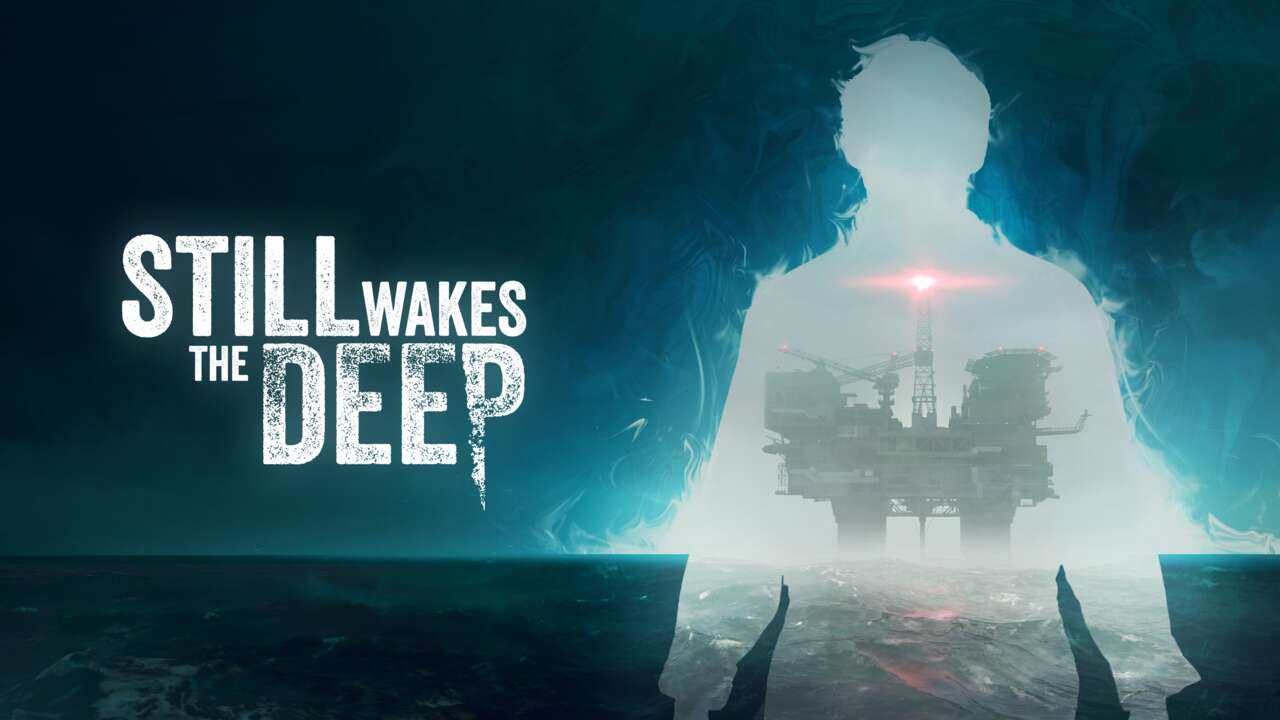Though The Chinese Room has previously worked in the horror genre, I don’t think of the team as primarily a horror-centric development studio. Rather, I’ve long felt its name is synonymous with sadness. The throughline spanning games like Dear Esther, Everybody’s Gone to the Rapture, and even Amnesia: A Machine for Pigs is a feeling of melancholy, longing, or even tragedy. Still Wakes The Deep continues this run of depressing games, which I mean as a compliment. By leaning into the studio’s forte, the game’s memorable horrors become more affecting hardships.
I’ve found it difficult to write about Still Wakes The Deep as I didn’t want to spoil its best aspect–the monster at the root of it all, which isn’t shown in any pre-launch materials. But then I discovered how the game has been advertised–“The Thing on an oil rig”–which seems to let me off the hook. As it turns out, that elevator pitch is exactly what this game is like. Blue-collar workers stranded with a creature of unknown origin is a classic horror premise–Alien’s “truckers in space” is essentially this, too. The Chinese Room pulls from these genre titans to tell a story of its own and places it all in an especially uncommon setting.
It’s Christmas 1975. Aboard an oil rig near Scotland, Caz McLeary evades the personal problems awaiting him back on the mainland by joining his buddy and several others toiling away at sea. The game’s early moments set the scene well, with large, intimidating human-made machinery creaking and bellowing amid a storm. Indoors, claustrophobic corridors are plastered in cautionary signage that reminds players of just how dangerous and oppressive an oil rig is–even without a monster showing up. Fulfilling any role in such an environment seems to merit copious hazard pay. As waves crash around the perimeter and rain-soaked ladders climb to platforms that feel more like thrill rides when you stand atop them, the game’s message seems clear: This place is not safe, and humanity doesn’t belong there.
It’s not long before the drill hits something, which the game dances around revealing for a time, like any well-paced horror would. Still being mindful of spoilers, I’ll say that once the threat is revealed, Still Wakes The Deep takes a turn I thoroughly enjoyed. Though the game’s scariest moments still ask you to crouch-walk into hiding spots, tactically plan every step, and do so without making noise the way countless other horror-adventure games have done, it’s the form of the creature that adds a rare element to these otherwise familiar gameplay loops; what do you do when your pursuer isn’t really bound to corridors made of doorways, stairs, and perpendicular hallways the way you are? What if they’re not even bound to any particular shape?
It’s this being’s alien-like qualities that are so confounding and intimidating. They feel intelligent and exacting like the Xenomorph, yet still horrifically human, which combines to create a skin-crawling beast no horror fan should miss. At once, you may feel sad and scared at the sight of the creature, as The Chinese Room ensures the formerly familiar aspects are there, albeit now distorted and tortured, like someone who gets violent during an episode of night terrors. You know they don’t mean it, and if they could wake, they’d apologize profusely. But for the moment, they’re trapped, so all you can do is escape their reach.
The creature’s physical appearance isn’t always as well supported by how moments play out, however. I didn’t mind there sometimes being long stretches in which I wasn’t pursued–horror doesn’t work if it’s one-note, after all. Still, the game’s most pulse-pounding moments were sometimes too easy to survive. Without a health bar, encounters are ruled by one-hit-kills. You’re either successful or dead. The in-between moments, like narrowly evading the monster to just barely close the door behind you, are scripted. This doesn’t leave room for more organically close calls. I never experienced any such moments, and I wish I did.
Furthermore, the creature seems unable to search inside hiding places, leaving you feeling totally safe except for when you move from one vent or table to another. Even flashlights don’t seem to stir the beast, which is fair enough if that’s how they are to be characterized, but then there need to be other threats beyond simply being spotted or heard, and more ways to die than a pass/fail binary.

Still, while the game as a whole doesn’t scare me to the degree recent Amnesia games do–to draw a comparison to games much like this one–I found it thrilling enough and certainly unique that I’m sure it’ll be a long time before memories of this monster leave my mind. Some of that is owed to the great soundtrack from Jason Graves, who is no stranger to the genre, having previously worked on things like Dead Space, The Dark Pictures Anthology, and Until Dawn. His approach here is reminiscent of The Chinese Room’s past games, particularly Everybody’s Gone to the Rapture, given it’s often the sort of music that would sound pleasant in another context, but here it comes across as unnerving. Like the monster, Graves’s score is noticeably human, yet obviously corrupted.
Outside of the game’s more direct hide-and-seek-like moments, it has you solving environmental puzzles and doing some light platforming–the former of which relies mostly on tension that, as mentioned, isn’t always there, and the latter of which works surprisingly well in first-person. The game overuses the trope of marking pathway progress with the color yellow–yellow paint spills, yellow ladders, etc.–though an update is coming shortly after launch which will allow you to hide these visual hints.
You’ll also meet much of the crew early on, whether it’s by chatting in the cafeteria or getting cursed out by Caz’s boss. It’s in the moments with the crew where the game shines brightly–second only to the introduction of the monster. The workers are Regular Joes, offering no keen abilities to help you through the nightmare scenario, just as Caz has little to offer them other than his innate impulse to survive. By learning who your co-workers are, it’s all the more horrifying when many of them get plucked off one by one.
Still Wakes The Deep is not a power fantasy, not even if seen through the point of view of its starring monster, as even there you’ll find much anguish–too much to ever view the being as simply a mindless creature hellbent on destruction, that’s for sure. It’s Caz’s own backstory, which drips out over the course of the six-hour game, that left me most affected, which is surely as intended. The manner in which he uprooted his life to join the rig crew is explored slowly during the game, and some supernatural elements are toyed with to drive home the overarching themes. As Caz, I desperately wanted to get back home, but the odds figuratively–and the rig literally–feel like they’re perpetually collapsing around him, making his story a sad one whether he lives to tell the tale or not. Naturally, I’ll not spoil that conclusion here.

Suffice it to say, the game’s final moments do well to bring its story all together. On the surface, and for a while, it’s a pure survival tale of humanity versus the unknowable depths of the ocean, which may as well be another planet, I’ve long felt–and it seems The Chinese Room agrees. It works well even just on that level of being a simple creature feature. But as the game chips away at its characters’ exteriors, which at first are as harsh as the setting, you come to see their true selves and remember why–beyond ingrained self-preservation–they are desperate to make it out alive.
Though some tension is lost in the binary and sometimes simplistic encounters with the creature, its physical makeup, and behavior are the game’s best aspects and rise to be deeply unsettling, if not terrifying. All of this makes Still Wakes The Deep a story that memorably tugs on your heart, starring a monster eager to tear it out.
